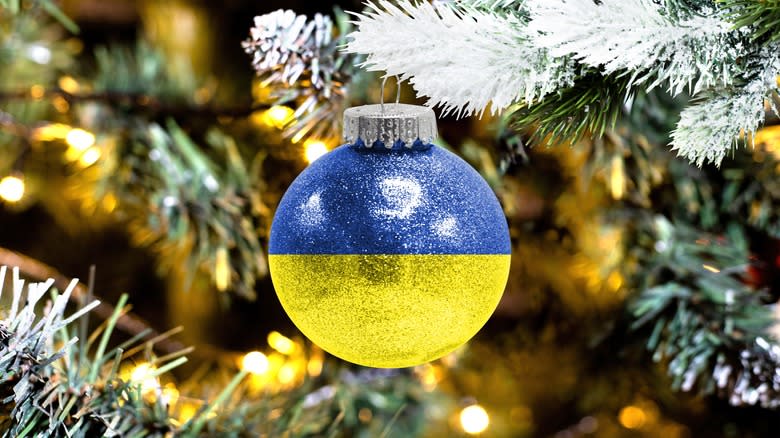In Ukraine, Orthodox And Catholic Christians Have 2 Different Christmas Dinners

Christmas is so nice, Ukrainians celebrate it twice. On January 7, the Russian Orthodox Christians have their day, and, on December 25, Catholics have theirs. As many people are probably already aware, most Christians celebrate Christmas in December. So, what gives? Are the Ukrainians just greedy for holiday cheer? Maybe some of them are, but that's not why they do it.
It's actually a relatively new change in Ukrainian culture. For centuries, the national holiday celebrating Christmas was on January 7 following the Orthodox tradition. It was as recent as 2017 that the Ukrainian government added December 25 as a second national holiday. This was good news for Ukrainian Catholics, who, up until then, had not had an official day off for Christmas. Because it's so recent, the jury is still out over which day the majority of people will prefer.
The dinners are much the same, with Ukrainian families putting out 12 different dishes to symbolize the 12 disciples of Jesus Christ. These dishes are vegetarian (technically pescatarian) since the Christmas Eve feast is also when people abstain from eating meat in honor of the animals that attended Jesus Christ's birth. You can find cabbage rolls, beet borscht, and other traditional offerings served for Christmas dinner. Potato vareniki is like a Ukrainian version of pierogies, and there's also cabbage soup and often baked apples for dessert.
Read more: 15 Different Ways To Cook Fish
Why Are There Two Christmases?

If we wanted to put it really simply, there aren't actually two Christmases – the two sects just don't share the same calendar. For many centuries, the Western world followed the Julian calendar (named after Julius Caesar), but, eventually, we discovered that it was off by about 11 minutes. That's not a huge problem until hundreds of years have passed and those 11 minutes turn into a two-week difference. In 1582, the Gregorian calendar was introduced by Pope Gregory XIII and was then adopted by the Catholic Church.
Although there are other calendars used around the world, such as the Persian Solar Hijri calendar in Iran, the Gregorian calendar is the most common. Even the Russian government uses a version of the Gregorian calendar, though the Russian Orthodox Church has held its ground. When December 25 became a national holiday in Ukraine in 2017, politicians were accommodating a relatively small minority of the country that wanted to transition to the Gregorian date. Interestingly, since the Russian invasion of Ukraine in 2022, that minority has grown exponentially though it is still a minority.
By transitioning to December 25, Ukrainians are distancing themselves from Russia and embracing the West. It's become important enough that, in July of 2023, Ukrainian President Volodymyr Zelenskyy went a step further and moved the official date of Christmas to December 25, which is a little more extreme than simply acknowledging the date as a holiday. For now, it seems likely that both dates will be celebrated. After all, who can complain about double the cheer?
Read the original article on Tasting Table.
